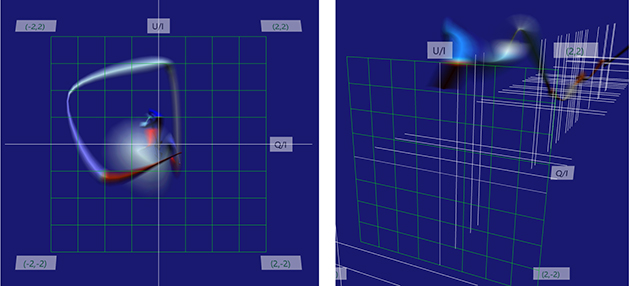TimeTubes: Visualization of Polarization Variations in Blazars
Abstract
:1. Introduction
2. TimeTubes
3. Applications to Real Data
3.1. PKS 1749+096
3.2. 3C 454.3
4. Discussion and Summary
Acknowledgments
Author Contributions
Conflicts of Interest
References
- Hagen-Thorn, V.A.; Larionova, E.G.; Jorstad, S.G.; Björnsson, C.-I.; Larionov, V.M. Analysis of the long-term polarization behaviour of BL Lac. Astron. Astrophys. 2002, 385, 55–61. [Google Scholar] [CrossRef]
- Abdo, A.A.; Ackermann, M.; Ajello, M.; Axelsson, M.; Baldini, L.; Ballet, J.; Barbiellini, G.; Bastieri, D.; Baughman, B.M.; Bechtol, K.; et al. A change in the optical polarization associated with a γ-ray flare in the blazar 3C 279. Nature 2010, 463, 919–923. [Google Scholar] [CrossRef] [PubMed]
- Marscher, A.P.; Jorstad, S.G.; D’Arcangelo, F.D.; Smith, P.S.; Williams, G.G.; Larionov, V.M.; Oh, H.; Olmstead, A.R.; Aller, M.F.; Aller, H.D.; et al. The inner jet of an active galactic nucleus as revealed by a radio-to-γ-ray outburst. Nature 2008, 452, 966–969. [Google Scholar] [CrossRef] [PubMed]
- Marscher, A.P.; Jorstad, S.G.; Larionov, V.M.; Aller, M.F.; Aller, H.D.; Lähteenmäki, A.; Agudo, I.; Smith, P.S.; Gurwell, M.; Hagen-Thorn, V.A.; et al. Probing the Inner Jet of the Quasar PKS 1510-089 with Multi-Waveband Monitoring During Strong Gamma-Ray Activity. Astrophys. J. Lett. 2010, 710, L126–L131. [Google Scholar] [CrossRef]
- Ikejiri, Y.; Uemura, M.; Sasada, M.; Ito, R.; Yamanaka, M.; Sakimoto, K.; Arai, A.; Fukazawa, Y.; Ohsugi, T.; Kawabata, K.S.; et al. Photopolarimetric Monitoring of Blazars in the Optical and Near-Infrared Bands with the Kanata Telescope. I. Correlations between Flux, Color, and Polarization. Publ. Astron. Soc. Jpn. 2011, 63, 639–675. [Google Scholar] [CrossRef]
- Pavlidou, V.; Angelakis, E.; Myserlis, I.; Blinov, D.; King, O.G.; Papadakis, I.; Tassis, K.; Hovatta, T.; Pazderska, B.; Paleologou, E.; et al. The RoboPol optical polarization survey of gamma-ray-loud blazars. Mon. Not. R. Astron. Soc. 2014, 442, 1693–1705. [Google Scholar] [CrossRef]
- Smith, P.S.; Montiel, E.; Rightley, S.; Turner, J.; Schmidt, G.D.; Jannuzi, B.T. Coordinated fermi/optical monitoring of blazars and the great 2009 September Gamma-ray flare of 3C 454.3. In Proceedings of the 2009 Fermi Symposium, Washington, DC, USA, 2–5 November 2009.
- Uemura, M.; Kawabata, K.S.; Sasada, M.; Ikejiri, Y.; Sakimoto, K.; Itoh, R.; Yamanaka, M.; Ohsugi, T.; Sato, S.; Kino, M. Bayesian Approach to Find a Long-Term Trend in Erratic Polarization Variations Observed in Blazars. Publ. Astron. Soc. Jpn. 2010, 62, 69–80. [Google Scholar] [CrossRef]
- Xu, L.; Nakayama, M.; Wu, H.-Y.; Watanabe, K.; Takahashi, S.; Uemura, M.; Fujishiro, I. TimeTubes: Design of a Visualization Tool for Time-Dependent, Multivariate Blazar Datasets. In Proceedings of the NICOGRAPH International 2016, Hangzhou, China, 6–8 July 2016.
- Abdo, A.A.; Ackermann, M.; Agudo, I.; Ajello, M.; Aller, H.D.; Aller, M.F.; Angelakis, E.; Arkharov, A.A.; Axelsson, M.; Bach, U.; et al. The Spectral Energy Distribution of Fermi Bright Blazars. Astrophys. J. 2010, 716, 30–70. [Google Scholar] [CrossRef]
- Lu, R.-S.; Shen, Z.-Q.; Krichbaum, T.P.; Iguchi, S.; Lee, S.-S.; Zensus, J.A. The parsec-scale jet of PKS 1749+096. Astron. Astrophys. 2012, 544, A89. [Google Scholar] [CrossRef]
- Sasada, M.; Uemura, M.; Arai, A.; Fukazawa, Y.; Kawabata, K.S.; Ohsugi, T.; Yamashita, T.; Isogai, M.; Nagae, O.; Uehara, T.; et al. Multiband Photopolarimetric Monitoring of an Outburst of the Blazar 3C 454.3 in 2007. Publ. Astron. Soc. Jpn. 2010, 62, 645–652. [Google Scholar] [CrossRef]
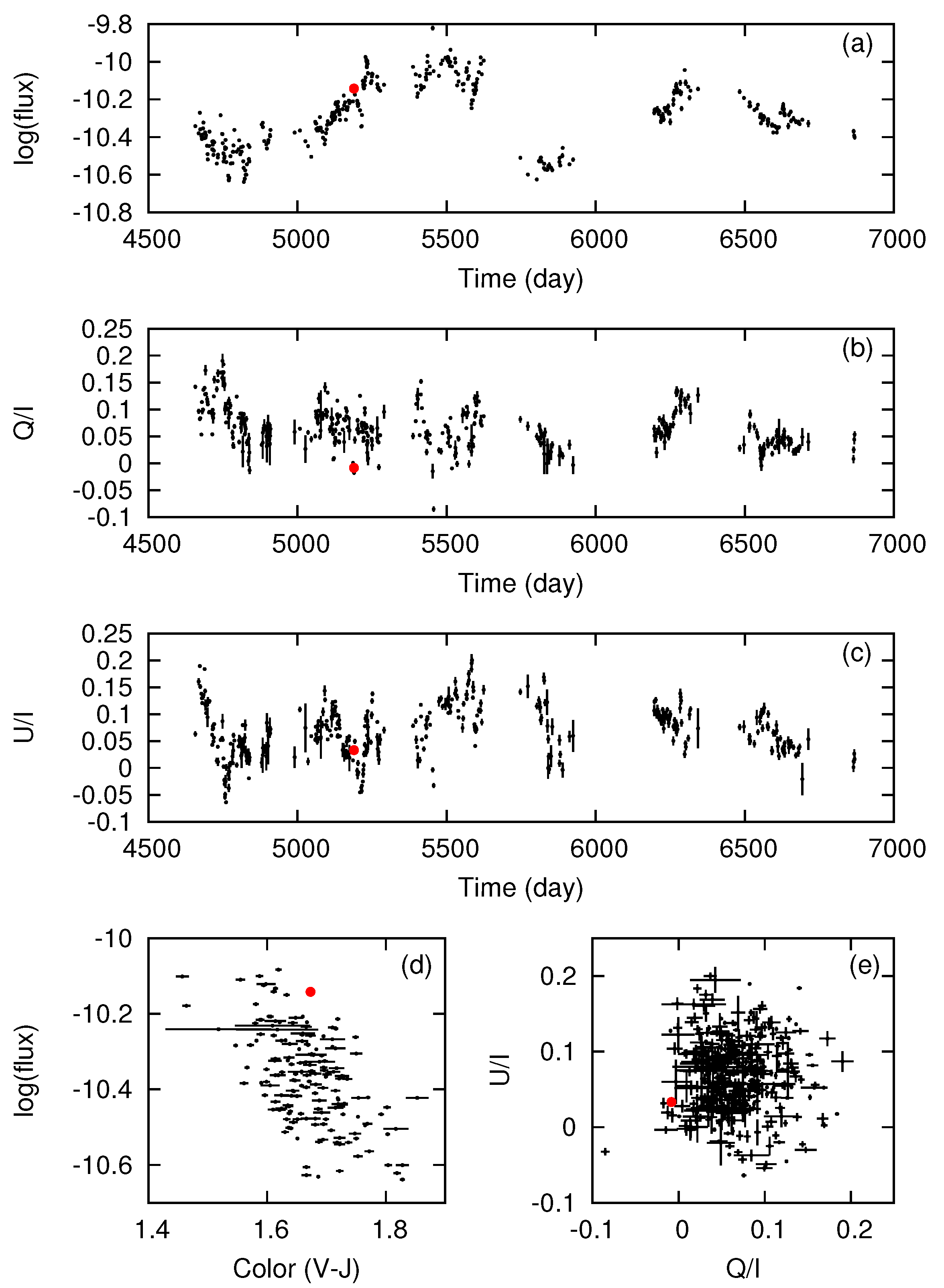
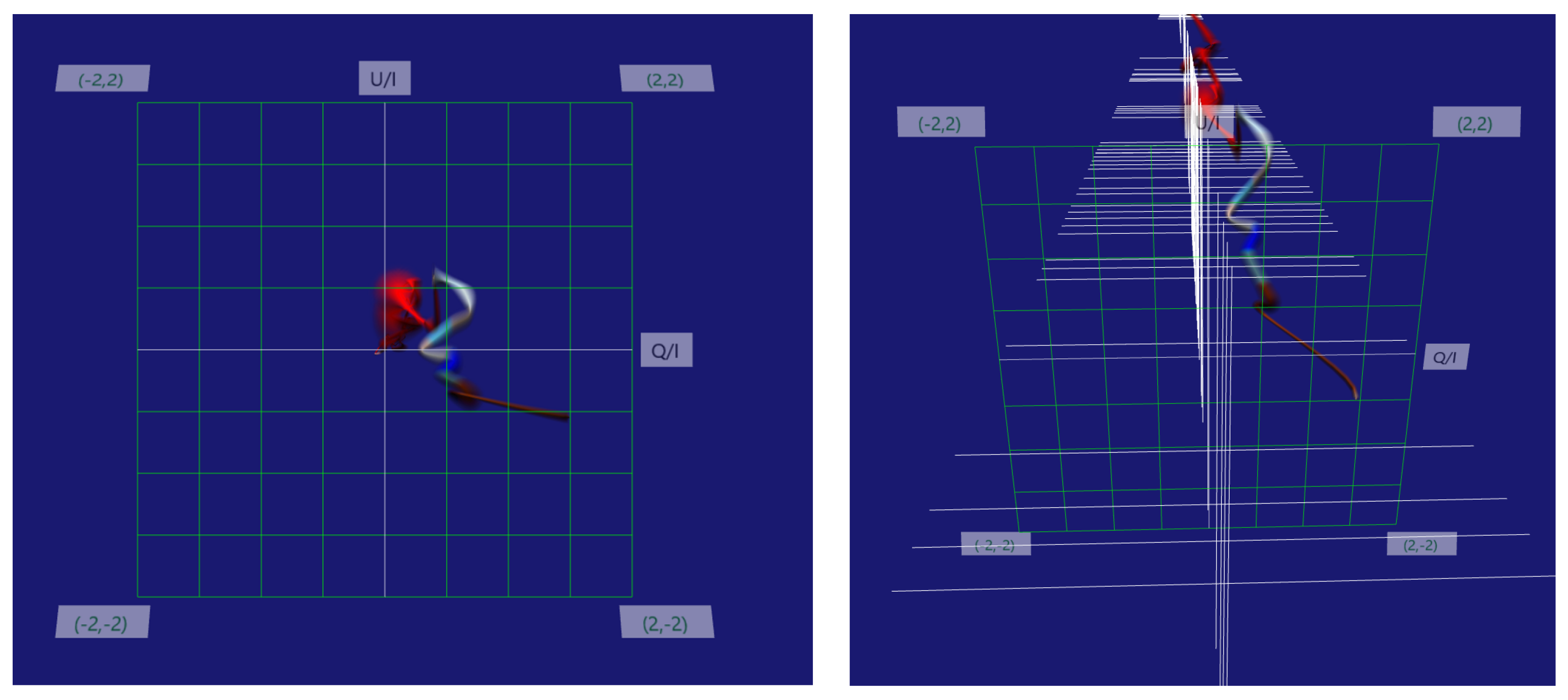

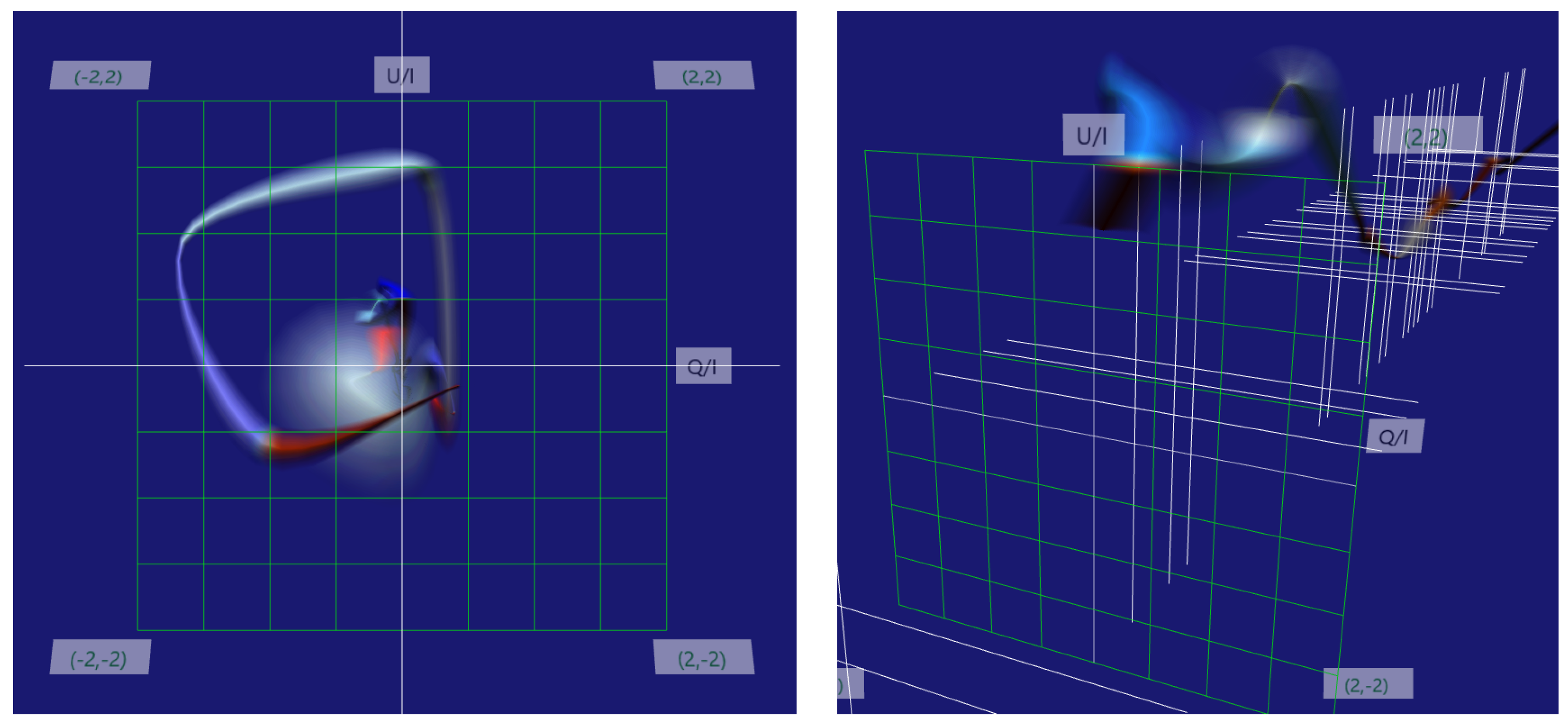
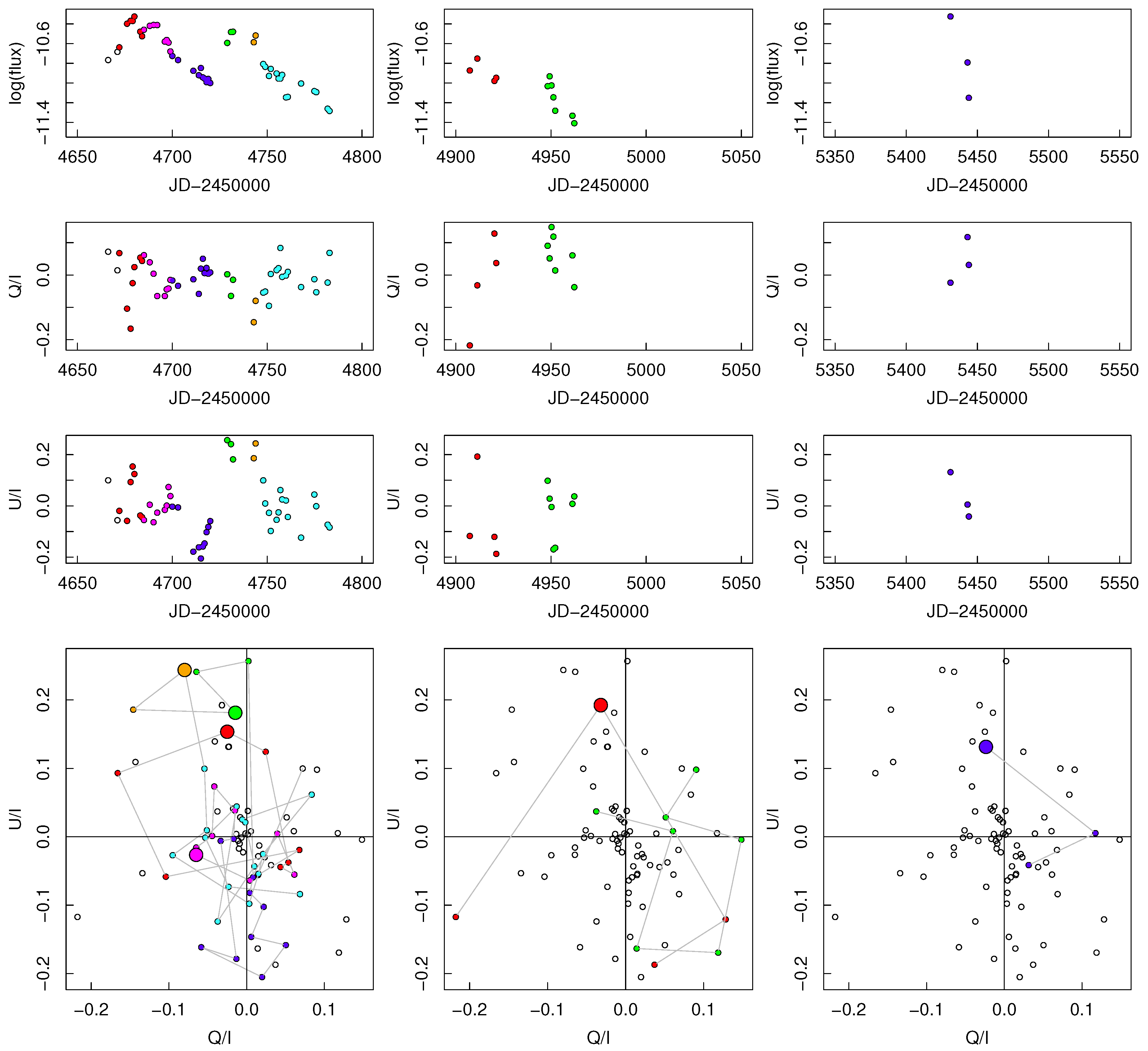
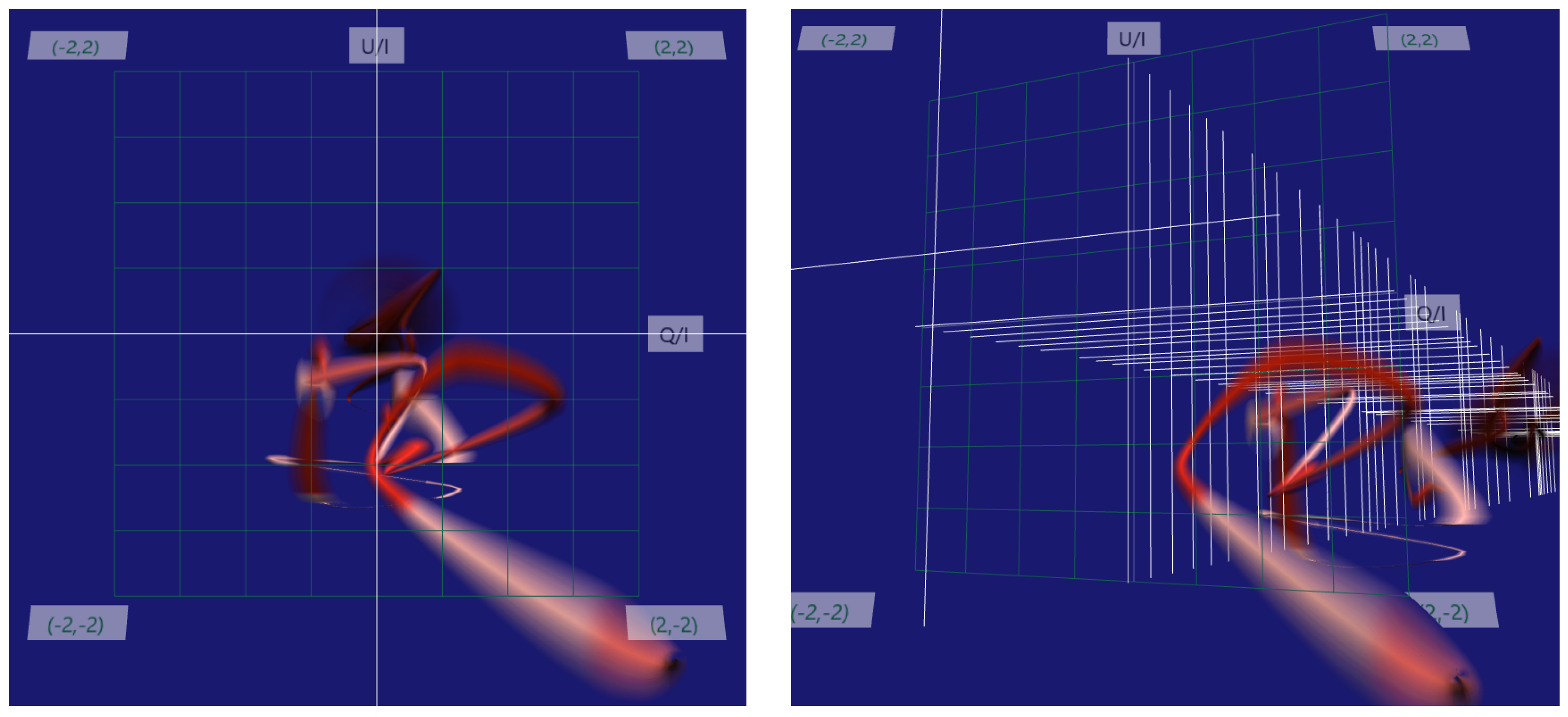
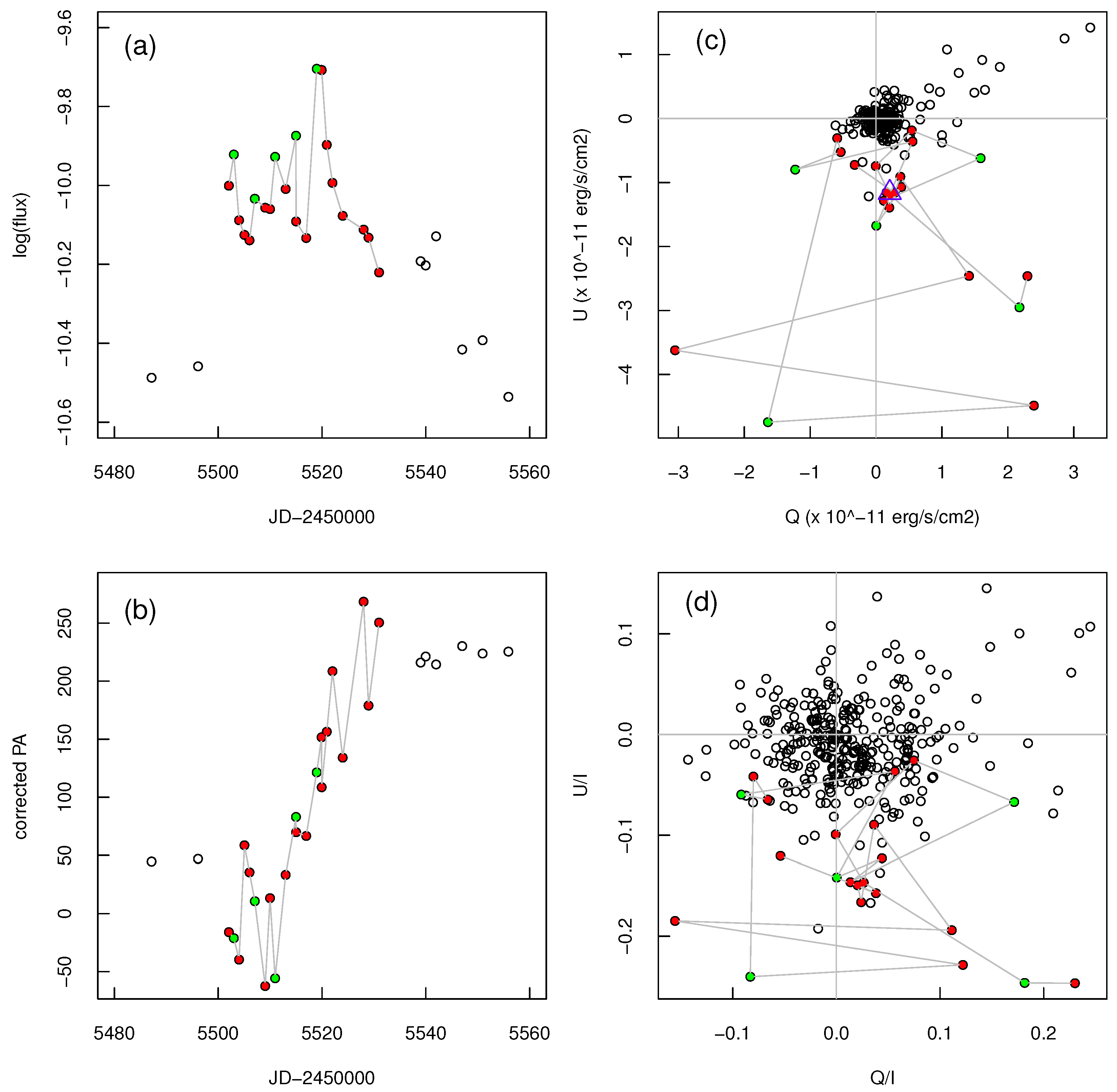
© 2016 by the authors; licensee MDPI, Basel, Switzerland. This article is an open access article distributed under the terms and conditions of the Creative Commons Attribution (CC-BY) license (http://creativecommons.org/licenses/by/4.0/).
Share and Cite
Uemura, M.; Itoh, R.; Xu, L.; Nakayama, M.; Wu, H.-Y.; Watanabe, K.; Takahashi, S.; Fujishiro, I. TimeTubes: Visualization of Polarization Variations in Blazars. Galaxies 2016, 4, 23. https://doi.org/10.3390/galaxies4030023
Uemura M, Itoh R, Xu L, Nakayama M, Wu H-Y, Watanabe K, Takahashi S, Fujishiro I. TimeTubes: Visualization of Polarization Variations in Blazars. Galaxies. 2016; 4(3):23. https://doi.org/10.3390/galaxies4030023
Chicago/Turabian StyleUemura, Makoto, Ryosuke Itoh, Longyin Xu, Masanori Nakayama, Hsiang-Yun Wu, Kazuho Watanabe, Shigeo Takahashi, and Issei Fujishiro. 2016. "TimeTubes: Visualization of Polarization Variations in Blazars" Galaxies 4, no. 3: 23. https://doi.org/10.3390/galaxies4030023





